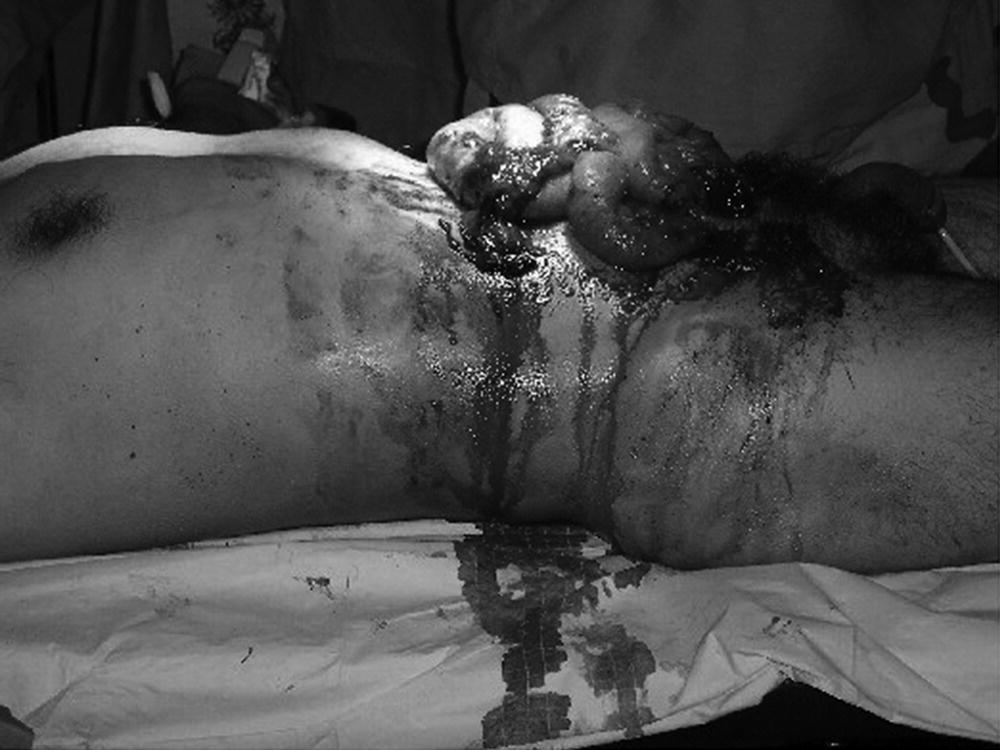Chapter 32 John McManus and Richard B. Schwartz A contemporary understanding of explosive injuries is essential for all out-of-hospital health care providers. Although most explosive injuries were previously encountered in austere and/or military environments, civilian attacks with explosive devices have now become more frequent due to the inexpensive nature and ease of access of explosive materials. In fact, the average number of bombings is five per day within the United States, with a total of 36,110 bombing incidents causing almost 700 deaths from 1983 through 2002 [1]. In the most recent explosive events on US soil in Boston, there were over 200 casualties [2]. Newer explosive devices used in recent attacks have resulted in casualties with severe combined penetrating, blunt, and burn trauma. In addition to terrorist bombings, accidental industrial explosions are also common. Although arson has not typically been included in the terrorist’s agenda, some explosive agents and materials used in attacks have flammable injury potential because terrorists typically aim their attacks at human beings directly. These explosive and burn types of injuries are not typically different from non-explosive burns; however, the severity and complexity of injury and/or number of burn patients are potentially greater in the former than in the latter. Burn injury and management will be discussed in Volume 1, Chapter 33. The medical provider treating explosive trauma in the out-of-hospital environment is faced with many unique challenges. Some of these challenges include the possibility of multiple casualties, unsafe environment, lack of medical supplies, prolonged evacuation time and distance, and lack of sophisticated care that is the standard for trauma management in the urban environment. This chapter will cover the evaluation and treatment of explosive injuries in the out-of-hospital environment. Because of the current increased terrorist threat and occurrences in many countries, many types of explosive devices can now be purposefully or accidentally encountered by out-of-hospital personnel in the civilian environment. Multiple types of improvised and manufactured explosive devices exist and only a few will be discussed. Most accidental explosive injuries occur from handling or encountering mines, improvised explosive devices (IEDs), or unexploded ordnance (UXO), such as grenades and ammunition. In Afghanistan alone, the combined death and injury rate was 150–300 per month from accidental UXO even before the US conflict [3]. The most common, purposeful explosive injuries currently in combat operations are from IEDs, homemade devices that cause injury or death by using explosives alone or in combination with toxic chemicals, biological toxins, or radiological material. IEDs can use commercial or military explosives, homemade explosives, or military ordnance and can be found in varying sizes and containers, and with various functioning and delivery methods. An explosion is caused by the rapid chemical conversion of a liquid or solid material into a gas with a resultant energy release. Low explosives (gunpowder) release energy slowly, by a process called deflagration. In contrast, high explosives release energy rapidly through a process called detonation, which involves the almost instantaneous transformation of the physical space occupied by original solid or liquid material into gases, filling the same volume within a few microseconds, thereby expanding under extremely high pressure. The highly pressurized gases compress the surrounding environment, generating a pressure pulse that is propagated as a blast wave. As a blast wave passes through the body, it causes damage by several different mechanisms. Patients injured from explosions usually suffer from a combination of blast, blunt, penetrating, and burn injuries. Injuries from explosives are divided up into categories (Table 32.1). Table 32.1 Categories of explosive injuries As the blast wave passes through tissues of different density, disruption occurs and small particles of tissue and liquids are thrown into the air space. This phenomenon is called spall. Not surprisingly, the injuries from this pressure wave tend to occur at sites of a gas/tissue interface (e.g. sinus, lung, middle ear, or bowel) (Figure 32.1). Traumatic brain injury can also occur without other signs of head injury. Figure 32.1 Example of an abdominal blast injury. Source: Reproduced with permission of John McManus. Injury from projectiles or secondary blast injury represents the most common cause of trauma from explosive events and causes the most significant mortality and morbidity when the victim(s) survives the primary injury. Most improvised explosive devices have projectiles packed around them (e.g. nails, ball bearings) to increase the injury potential from secondary blast injury. Tertiary blast injury results when victims are displaced by the blast wave and they become projectiles themselves. The resulting injuries may be severe and include a mix of blunt and penetrating trauma. In addition, structural collapse may contribute to the injuries under tertiary blast injury.
Blast injury
Introduction
Explosive devices
Blast injury
Category
Mechanism
Injury type
Primary
A form of barotrauma, unique to explosions, which causes damage to air-filled organs
Secondary
Trauma caused by the acceleration of shrapnel and other debris by the blast
Tertiary
Casualty becomes a missile and is propelled through the air, with typical patterns of blunt trauma
Quaternary
All other explosion-related injuries, illnesses, or diseases which are not due to primary, secondary, or tertiary mechanisms
Quinary
The intentional addition of agents that may result in injury
Primary blast injury

Secondary blast injury
Tertiary blast injury
Quaternary blast injury

Full access? Get Clinical Tree




